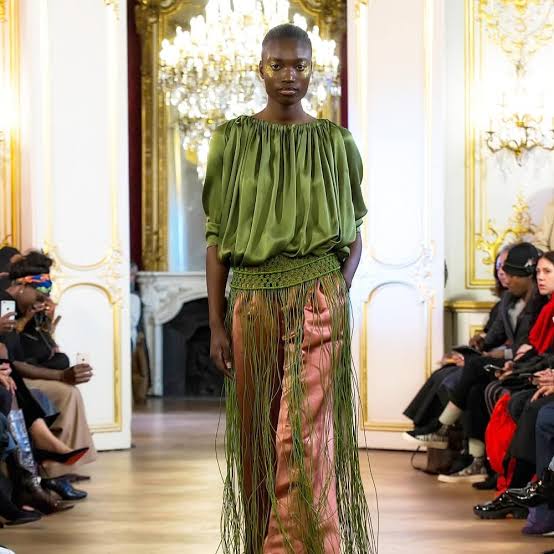Through an electrifying display of creativity and cultural fusion, Cameroonian couture designer Imane Ayissi unveiled his latest collection at Paris Fashion Week, drawing inspiration from the rich artistic heritage of both Africa and China.
The collection, aptly named “Akalene,” meaning “correspondence” or “exchange” in one of Cameroon’s native languages, epitomizes the convergence of diverse traditions and artistic expressions.
Ayissi, renowned for his unique ability to merge African heritage with the sophistication of French haute couture, took a bold step by incorporating elements from the paintings of Chinese diplomat and artist Wang Ying. The result was a breathtaking showcase that left the audience in awe and solidified Ayissi’s reputation as a pioneer in the fashion industry.
“The collection is called Akalene, which signifies a cultural exchange, a language exchange, a sharing of memories and histories,” Ayissi explained, his passion evident as he spoke about the inspiration behind his work. “Africa is connected to many cultures, and through fashion, we can share and celebrate these connections.”
The runway came alive with an explosion of colors and textures.
Models strutted down the catwalk in voluminous outfits characterized by large sleeves and cascading hay fringes, creating larger-than-life silhouettes that commanded attention. The vibrant color palette featured bright satins in shades of fuchsia, green, and chartreuse, juxtaposed with earthy tones of pink, lilac, and brown, offering a visually stunning contrast.
One of the standout aspects of Ayissi’s collection was his commitment to sustainability. Collaborating with the Bamboo Union, he incorporated bamboo-based fabrics, emphasizing the importance of eco-friendly fashion. This partnership not only highlighted the versatility of bamboo but also underscored Ayissi’s dedication to environmentally conscious design.
In a striking example of cultural fusion, Ayissi collaborated with a Chinese artist to create several pieces that embodied the spirit of Akalene.
One such piece, a kaba dress adorned with floral designs on the chest, paid homage to the empire style introduced during colonial times.
“The technique for working the hay, which has become a traditional outfit in Cameroon, was brought in by the colonialists,” Ayissi noted, reflecting on the historical influences that have shaped his creations.
Ayissi’s latest collection is the reality of his vision of art as a universal language that transcends borders. By blending African and Chinese influences, he has crafted a narrative that celebrates the beauty of cultural exchange and the interconnectedness of humanity.




